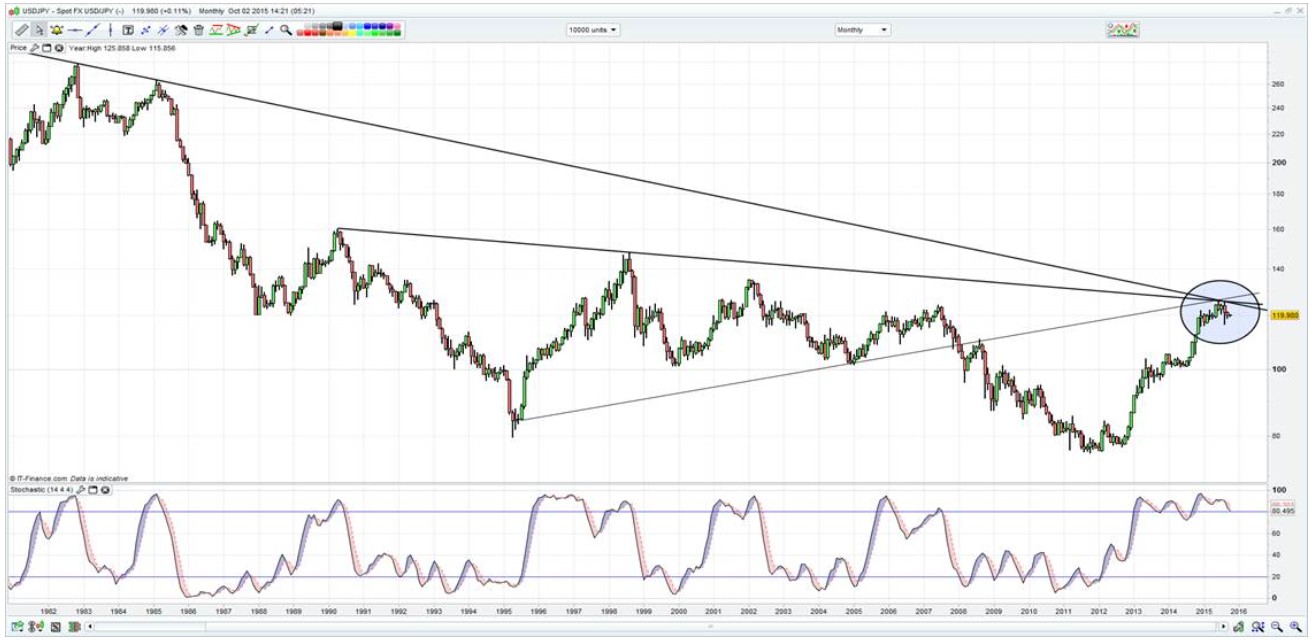Chris Weston, Chief Market Strategist at IG Markets
We’ve been pushing the idea that the market wants clarity before staging a rally of some sort. However, given the extent of all the moving parts, it has become clear it’s not that simple.
Having recently heard speeches from key Federal Reserve members Yellen, Lacker, Dudley and Williams all mentioning that the funds rate is likely to go up this year, the implied probability of a December hike has simply not budged. The implied probability has languished between 40% to 42% and traders just refuse to be drawn in by the fairly upbeat language. If the Fed feel strongly about hiking when the market pricing is more aligned to their thinking, then we’re not there yet. With the market feeling strongly, they can make their own interpretation about how the multiple variables (such as emerging market outflows, USD strength, volatility in financial markets and ultimately financial conditions) effect Fed thinking.
This is a similar phenomenon in the fixed income complex where inflation expectations have diverged from their strong correlation with oil. The bond market’s pricing of future inflation expectations (I’ve looked at the so-called ‘breakeven’ rate) has stayed at rock bottom levels despite stability in the oil complex. In fact, there seems to be a floor in the WTI price between $44 to $43.80 and Brent at $47.00 a barrel. This highlights a belief that there really isn’t much central banks can do to drive inflation. This drive a credibility issue and is another key determinant of global volatility.
Today’s US payrolls number (released at 22:30 AEST) has once again been labelled a ‘much watch’ and to be fair, I think traders are getting a bit exhausted of these event risks which are supposed to carry so much weight that they can alter the investment landscape. Still, I don’t see another 200,000 payrolls report (in line with the six-month average of 222,000) as a real game changer. Naturally, the market will be keen to see if the tradition of August revisions occurs and this could alter the quality of the report. A fall in the unemployment rate (currently at 5.1%) and an increase in the participation rate would also aid the overall sentiment towards the release.
The single most influential issue that should jump out immediately is that forecasters are expecting wages to grow 2.4% (range 2% to 2.5%). This would effectively be the strongest pace of wage growth since late 2009 and should increase the implied probability of a December hike closer, if not above 50%. The USD should attract buyers in this environment, especially as the leveraged community have trimmed their USD exposure to the second lowest levels of the year.
It’s hard to say if Asian markets have been genuinely concerned by the payrolls report but there has been a risk off feel to today’s trade, although Hong Kong is seeing good buying after being closed yesterday. Japan opened around 1% lower despite a 2.9% increase in household spending and a larger-than-forecasted 35.1% increase in the monetary base. The fact that the jobless rate ticked up 10 basis points to 3.4% should worry anyone, and the lack of reaction in USD/JPY has been key here.
In fact, USD/JPY is going absolutely nowhere. However this that could change with US payrolls in play, but like any market – beware of a dull market! There is a fierce debate not just about where the pair goes. If you are looking purely at central bank policy divergence, the bias should be long, especially given there is a reasonable chance of additional stimulus at the 30 October Bank of Japan meeting. However, if we take a step back and look at the longer-term timeframes, one can see triple resistance around the $126.00 area on the monthly chart, while the quarterly chart shows momentum is waning. In fact, the stochastic oscillator has given fairly reliable signals when we see a bearish crossover, which is in play now.
(USD/JPY monthly chart)

So there seems to be growing disagreement between fundamentals and the technicals and in my opinion, one should always back the technicals.
Despite outperformance yesterday, the AUD/USD has traded between $0.7056 to $0.7011 today, hitting the session high after Aussie August retail sales came in-line with the 0.4% forecast. The initial 12 pips spike presumably came down to positioning more than anything else. There could have been a fund running a sizeable short position expecting a re-run of July’s decline in retail spend. Still, this number doesn’t change anything in Australia. However, one does get the feeling that there is somewhat of a more positive feel to the AUD of late, although price action overnight is hardly suggestive of moves into $0.7200 as things stand.
The ASX 200 saw a whippy open, trading in a 1.3% range in the first 30 minutes, before finding better sellers. Clearly the retail numbers haven’t greatly assisted, although the bulk of the selling has taken place in the healthcare, Real Estate Investment Trusts and financial space. Volumes are 24% below the 10-day average (at the time of writing) and this isn’t surprising given the Victorian State holiday.
Here in sunny Melbourne most of the talk on trading desks has centred on the plethora of weekend sport, although positioning ahead of US payrolls and a broader view of markets is also widely in focus. From all accounts, the consensus seems to expect flags for the Hawks, Cowboys and England (union. For that, you can get $5.25 on the multi.